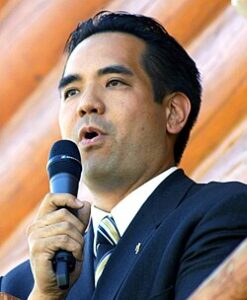 Business owners in many types of industries, including architecture and engineering, may be eligible for federal and state research and development (R&D) tax credits and not realize it. Some mistakenly believe that these credits only apply to scientists and medical researchers working on the development or improvement of new products, software or pharmaceuticals. Or, they may believe that only large companies can qualify.
Business owners in many types of industries, including architecture and engineering, may be eligible for federal and state research and development (R&D) tax credits and not realize it. Some mistakenly believe that these credits only apply to scientists and medical researchers working on the development or improvement of new products, software or pharmaceuticals. Or, they may believe that only large companies can qualify.
The federal R&D tax credit has been in place for decades and it became a permanent part of the U.S. Tax Code in 2015 under the Protecting Americans From Tax Hikes Act (PATH Act). Two-thirds of U.S. states also offer tax credits for R&D activities. The objective of these tax credits is to keep the U.S. at the forefront of technology and advancement by stimulating investments in innovation, technological design and manufacturing.
Missed Opportunities for Architects and Engineers
Architects and engineers are often unaware that their projects can qualify for R&D tax credits. They may not realize that the innovative processes and activities they undertake could yield beneficial tax savings, increase their cash flow and increase their competitive advantage.
Both architects and engineers perform tests and experiment with new designs and materials to work in unique or challenging environments. For example, some projects involve the use of new and improved processes and practices for green building design, new HVAC installation and utility system design for increased energy efficiency. These are just a few of the innovative design, engineering and construction processes that may qualify.
Eligible R&D activities for architects include:
- Developing schematic designs
- Master planning process and design
- Developing elevation drawings for planning
- Determining alternative materials
- Evaluating new design approaches to meet complex client requirements or building codes
- Designing a functional site plan to accommodate or include site features
- Achieving LEED certification
- Designing systems in a building
- Designing the shape of a building
- Designing the way a building is situated on the site
Eligible R&D activities for engineers include:
- BIM modeling – Designing a building collaboratively with one system of computer models
- Determining alternative structures
- Developing or improving lighting
- Value engineering
- Developing substitute electricity conduction systems
- Improving or determining substitute heating and air conditioning systems
- Developing or improving lighting
- Environmental design
- Environmental impact studies
The Four-Part Test: Qualifying for R&D Tax Credits
To determine what activities may constitute as qualified research, the first step is to review project activities according to a simple four-part test established by the IRS:
- Permitted purpose/business component – The activity must relate to creating new or improved business components that result in improved function, performance, reliability or quality.
- Technological in nature – The activity must rely on the principles of physical or biological science, engineering or computer science. These principles can cross into many industries such as architecture and structural engineering.
- Elimination of uncertainty – The activity must be intended to discover information to eliminate uncertainty regarding the capacity, method or design for developing or improving a product or process.
- Process of experimentation – The project should include the evaluation of different alternatives to resolve or eliminate a technical uncertainty. This evaluation may involve modeling, systematic trial and error, simulation or other methods.
Seek the Help of Qualified R&D Tax Credit Professionals
If the activity meets this four-part test, the next step is for the firm to identify qualified research expenses on the project and compute the tax credit. The IRS requires a substantial amount of detailed documentation to file a claim. That’s why it’s important to seek assistance from a specialty tax professional with strong expertise in helping architects and engineers claim these valuable tax credits.
The R&D tax credit experts at Engineered Tax Services can dig deeper into the fundamentals of your firm’s business activities. We’ll apply our expertise in operations, engineering, finance and tax to find more credits for your architecture or engineering business. We’ll meticulously document your activities and eligible costs so that you can obtain the qualified tax credits you deserve.
We have helped companies of all sizes across the U.S. identify and qualify these expenditures and receive the tax benefits they have been missing. Our process begins with an R&D Tax Credit Qualification Analysis to make sure your company qualifies for the R&D tax credit.
To learn more about R&D tax credits for architects and engineers, please complete the form at the bottom of this page. If you have immediate questions about tax deductions for architects and engineers, please call Engineered Tax Services at (800) 236-6519 or visit our R&D tax credit page for more information.




